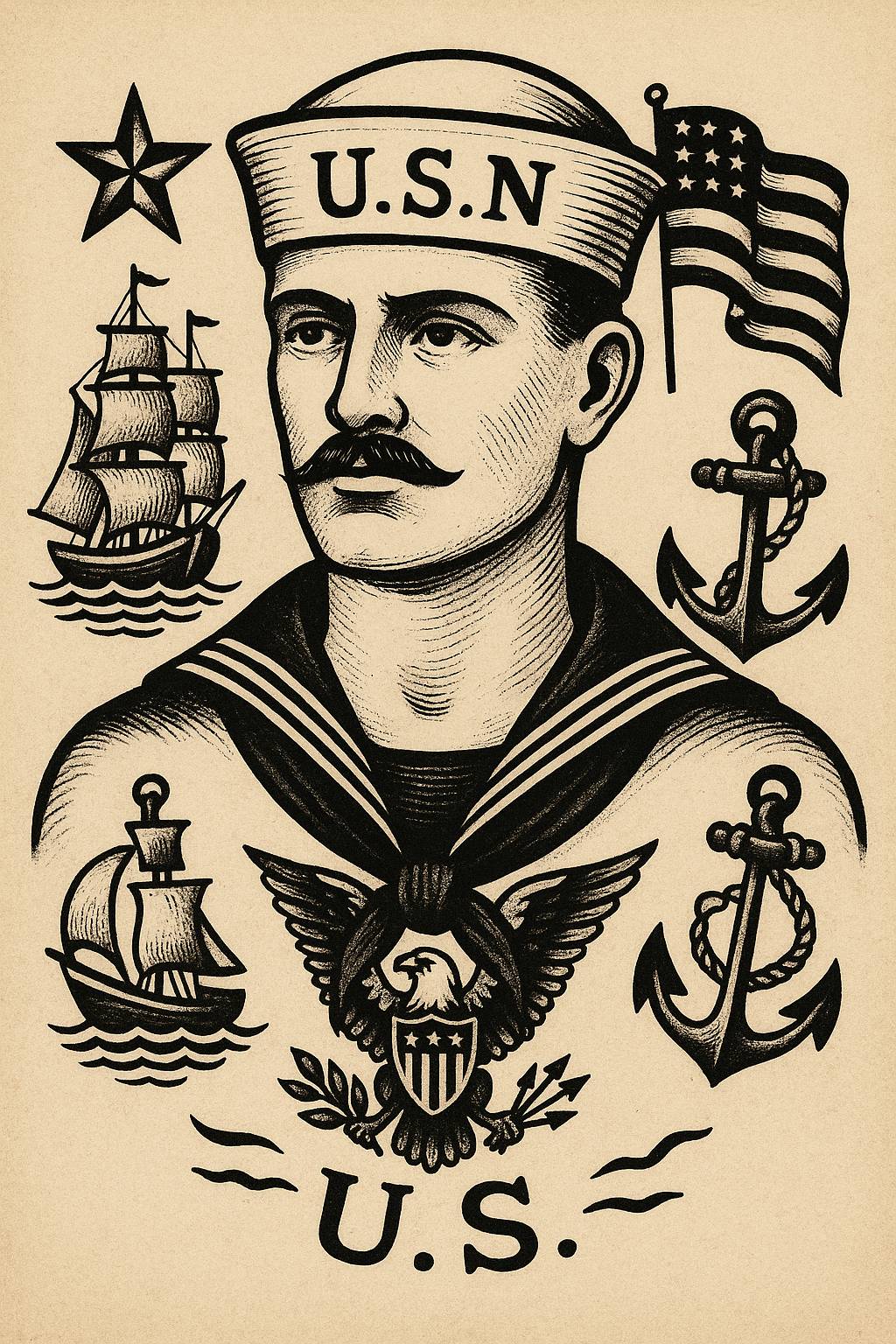Ink and Honor, Part 1: The Origins of American Military Tattooing

Before tattoos lined the arms of Marines or marked the backs of sailors with eagles, anchors, and “Mom” hearts, they started as something older, stranger, and more global.
American military tattooing didn’t begin in the U.S.—it began on the ocean.
From Polynesia to Port Cities
In the 1700s and early 1800s, American sailors were some of the first to bring tattooing home from the far corners of the world. While serving aboard ships that visited Polynesia, the Philippines, and other Pacific regions, these early seamen encountered bold, symbolic tattoo art deeply rooted in warrior traditions.
They liked what they saw—and they brought it back to the States, often on their own skin.
By the time the American Revolutionary War was underway, it wasn’t uncommon to find inked-up sailors in colonial ports like Boston, Philadelphia, and New York. Most early tattoos were simple: initials, crosses, anchors, names of ships, or the word “U.S.” inked in black.
Why? Because if a sailor was lost at sea, his tattoo might be the only thing that told someone who he was.
Sailors Led the Charge
Through the 1800s, U.S. Navy men continued the tradition. Tattoos became personal badges of travel, survival, and service. Some included:
Anchors (symbolizing safe return or naval pride)
Swallows (one for every 5,000 nautical miles sailed)
Names of sweethearts, children, or hometowns
Biblical verses, crosses, and hearts
As the Navy grew, so did the ink.
By the Civil War, soldiers—not just sailors—were getting tattooed too. Union and Confederate soldiers sometimes marked themselves with initials, birthplaces, or even unit names in case they were killed in battle. It was crude but practical.
The First American Tattooers
This early wave of military ink helped birth the first generation of American tattoo artists. By the late 1800s, shops started appearing in big port cities, like New York, where Samuel O’Reilly patented the first electric tattoo machine in 1891.
That changed the game. Tattoos got faster, cleaner, and more popular.
And the military kept them alive—especially the Navy. Ink was tradition now.
That’s the start of the story—sailors, sea travel, and the roots of American ink. In the next post, we’ll get into World War I and the patriotic boom of tattooing that followed.
Until then, got a military tattoo with a story? Send it our way and we might feature you.
